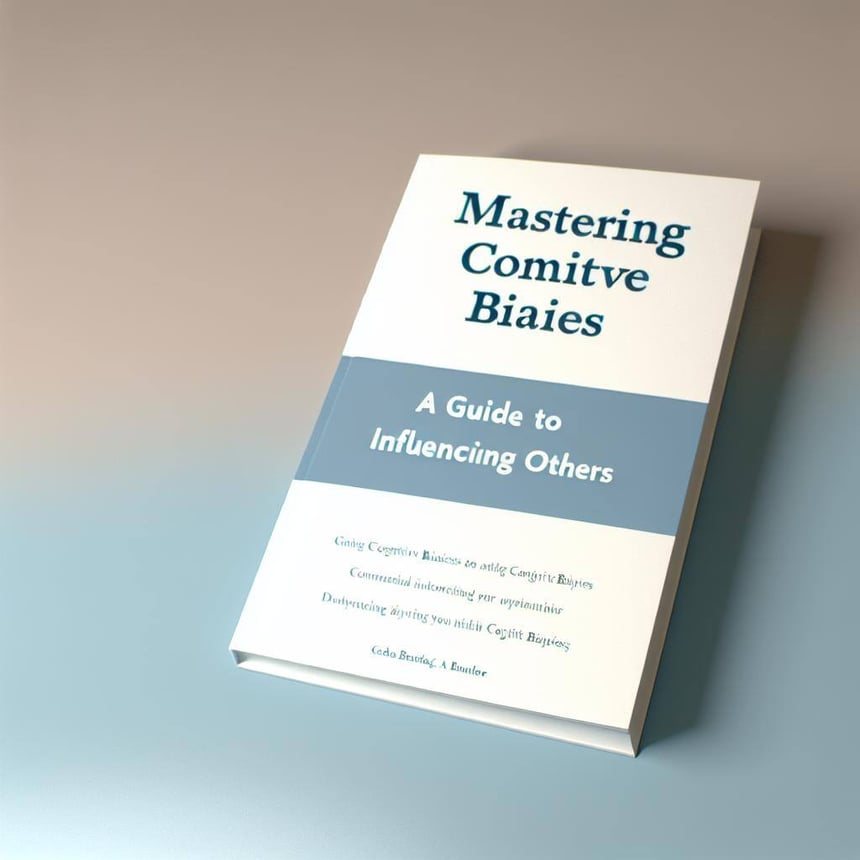Understanding Cognitive Biases
Understanding cognitive biases is crucial in mastering the art of influencing others. Cognitive biases are inherent biases in human thinking that can lead to systematic errors in judgment and decision-making. These biases often occur unconsciously and can significantly impact how people perceive and interpret information.
By understanding cognitive biases, you can gain insight into how people's minds work and use that knowledge to effectively influence their thoughts and behaviors. This section will explore some of the most common cognitive biases and their implications.
Types of Cognitive Biases
Numerous types of cognitive biases influence human thinking. Some of the most well-known biases include confirmation bias, availability heuristic, anchoring effect, and framing effect.
Confirmation bias refers to the tendency to seek out information that confirms pre-existing beliefs or ideas while disregarding contradictory evidence. The availability heuristic is the tendency to rely on readily available information or examples when making judgments or decisions. The anchoring effect occurs when people rely too heavily on the first piece of information they receive when making judgments. The framing effect refers to how the presentation of information can influence decision-making.
Understanding these types of cognitive biases is essential for effectively influencing others, as it allows you to tailor your messaging and presentation to align with these biases.
Impact of Cognitive Biases on Decision-Making
Cognitive biases can have a significant impact on decision-making processes. These biases can lead to flawed reasoning, irrational judgments, and suboptimal choices.
For example, confirmation bias can result in people dismissing or ignoring information that contradicts their beliefs, leading to biased decision-making. The availability heuristic can lead to overestimating the likelihood of certain events based on their ease of recall, which can influence decision outcomes.
By understanding the impact of cognitive biases on decision-making, you can develop strategies to mitigate their effects and guide others toward making more rational and informed choices.
Strategies to Utilize Cognitive Biases in Influence
Utilizing cognitive biases in influence involves leveraging people's inherent biases to shape their thoughts and behaviors. By understanding how cognitive biases affect decision-making, you can employ specific strategies to influence others effectively.
One strategy is to use the anchoring effect by presenting a high or low value as a reference point to influence subsequent judgments. Another strategy is to appeal to the availability heuristic by providing vivid and memorable examples or anecdotes that support your message.
Additionally, framing your message in a way that aligns with the recipient's existing beliefs or values can tap into the confirmation bias and increase the likelihood of acceptance and compliance.
These strategies, when used ethically and responsibly, can enhance your ability to influence others and achieve desired outcomes.
Case Studies of Successful Influence Using Cognitive Biases
Examining real-life case studies can provide valuable insights into the successful application of cognitive biases in influencing others.
One case study involves a marketing campaign that utilized the scarcity bias, creating a sense of urgency and exclusivity to drive sales. Another case study explores how social proof bias was leveraged to influence public opinion and behavior.
By studying these case studies, you can learn from practical examples and gain inspiration for your own efforts to influence others using cognitive biases.



.jpg)






.jpg)



0 Comments